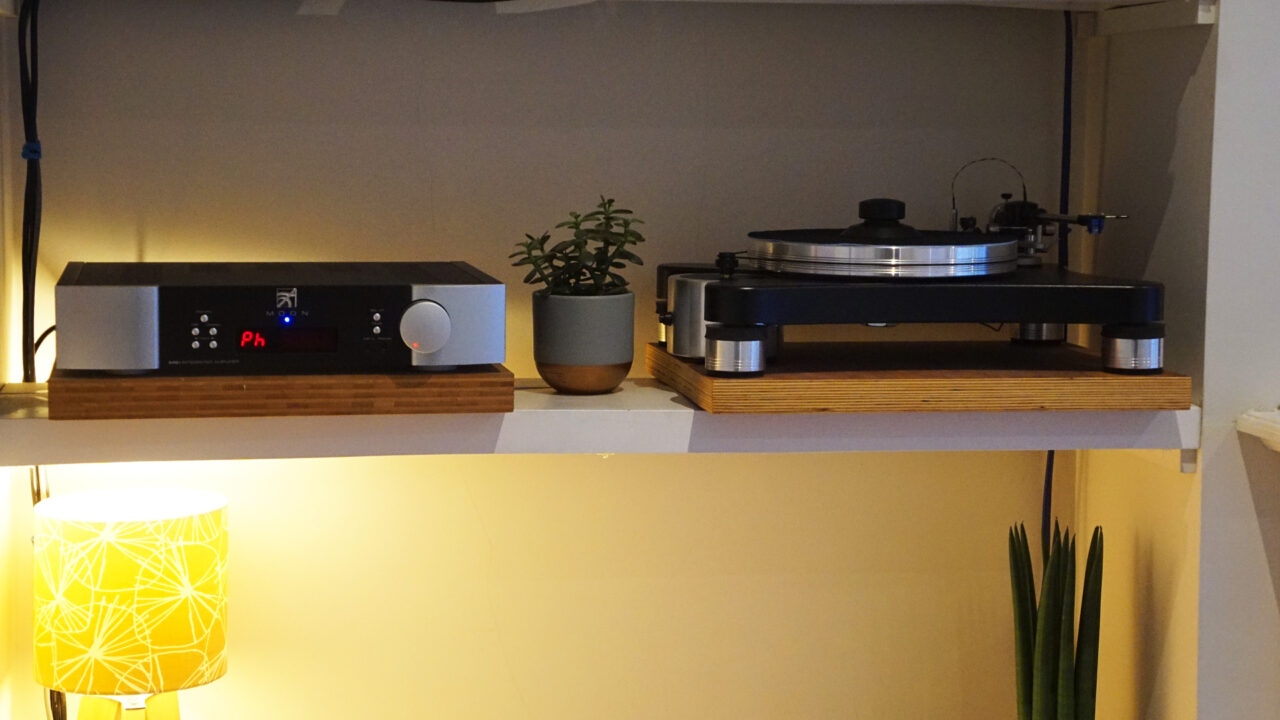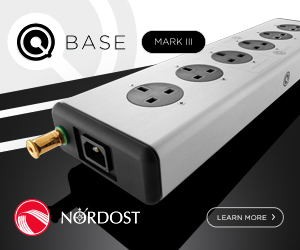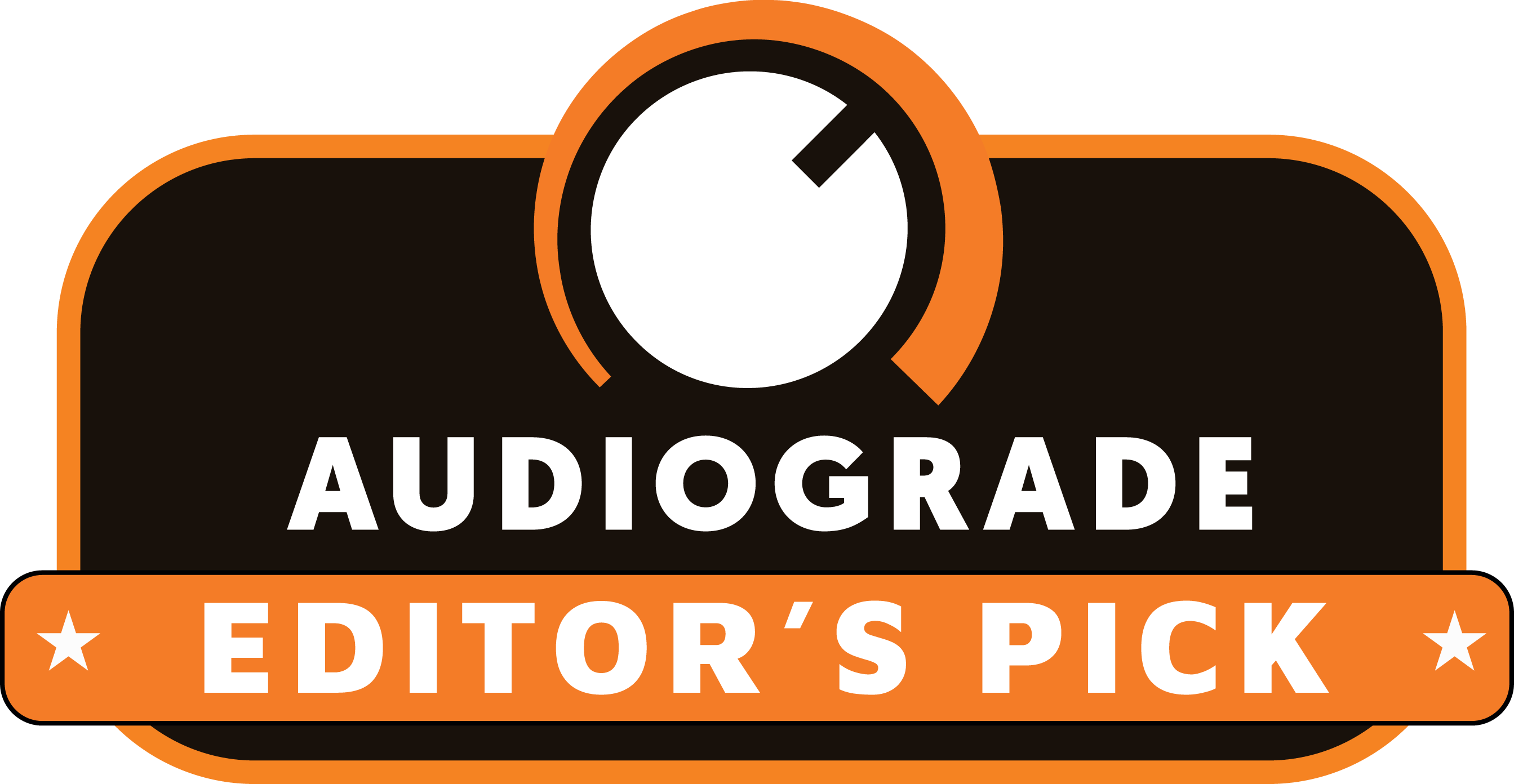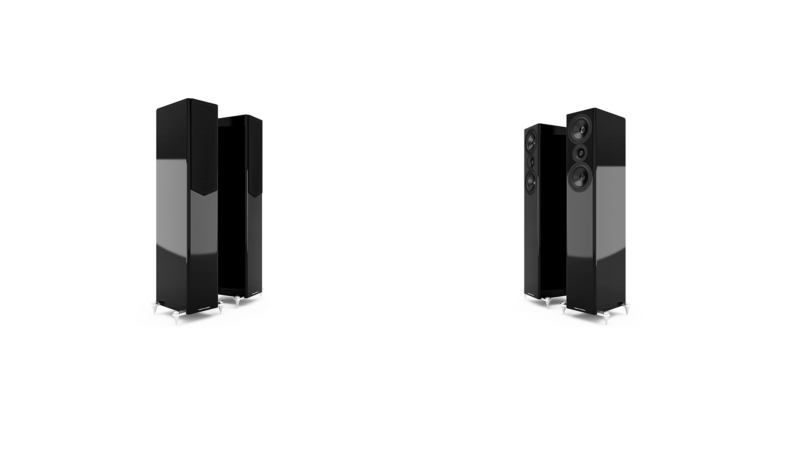One of the most important words in hifi is synergy. It’s the hidden component that represents what we’re all looking for in our systems, to make our separates combine and sound greater than the sum of their individual contributions.
This is why good local hifi dealers are so valuable with their experience in knowing which brands and equipment complement each other, helping to take the stress out of buying blind because something looked cheap or had rave reviews, only for you to find said kit sounding lifeless in your system.
Two brands and their products that have garnered plenty of interest in recent times as ideal bed fellows are MOON by Simaudio electronics and VPI Industries turntables. Both hailing from across the pond (Quebec for MOON and New Jersey for VPI), you’d struggle to visit any recent hifi show and not find their hardware happily rubbing shoulders for great sonics in crowded hotel rooms full of eager ears.
The package we’ve brought together here consists of MOON’s 340i X integrated amplifier and a VPI Scout 21 turntable. With a base price of £3,800 for the amp, we also opted for an inbuilt D3 DAC, MM/MC phono board and single set of balanced inputs. Adding these extras separately would raise the amp’s price to around £5,250 (£1,000 for the DAC and £450 for the phono board) however MOON will install them all as a package for £4,500 all-in, giving you extra savings.
The VPI Scout 21 costs £2,700 (sans cartridge), bringing the total system price to £7,200.
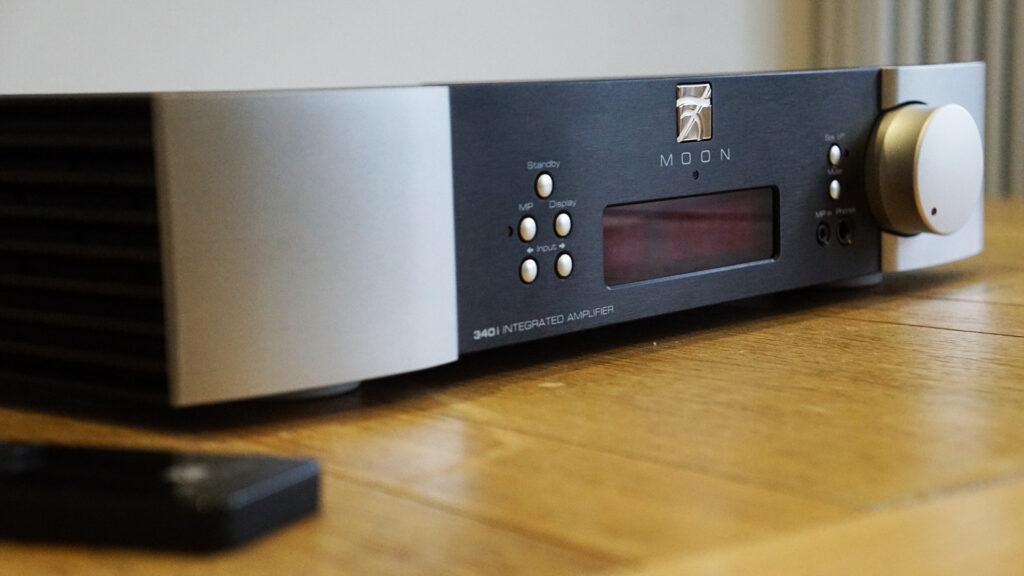
The 340i X comes in all black, or MOON’s trademark two-tone black and silver. An all silver model is also available to order
Shoot for the MOON
Starting with the amp, what MOON has done here is focus on customer needs along with quality. While the brand sells a range of integrated amps (starting with the 240i at £2,600 up to the 600i V2 at £7,900) plus a wealth of pre/power and digital separates, it also offers is upgrades within each model, allowing customers to tailor as they go.
At the heart of the 340i X beats a Class AB 100W (into 8ohm) amp that’s designed around two pairs of MOON’s precision matched proprietary bipolar output transistors per channel, working in Class A up to 5W and powered by a huge custom toroidal transformer, feeding two banks of 10,000uF capacitors per side. Analogue inputs include three line-level over RCA and one balanced over XLR, with the phono stage taking up a fourth pair of RCA sockets. There’s also a front panel 3.5mm input for portable players and the like.
With the D3 DAC onboard, this adds three S/PDIF inputs (one optical and two coaxial) alongside a USB-2 handling PCM data rates up to 32-bit/384kHz and DSD up to 256.

Five rear-panel analogue inputs include three line-level and one MM/MC over RCA, alongside a set of balanced XLRs plus fixed and variable outs. The D3 module adds S/PDIF over optical and coaxial, plus USB
Covering all bases
The onboard phono stage is just as flexible, with impedance settings for 10/100/475/47k ohms and capacitance for 0/100/330/430pF. There are also five gain settings at 40/50/54/60/66dB, making this more versatile than most standalone phono amps at twice the price. If you’re a regular cartridge swapper, you’ll need to be confident enough to pop the MOON’s top cover to access the phono board’s jumpers and if not, your dealer is there to help.
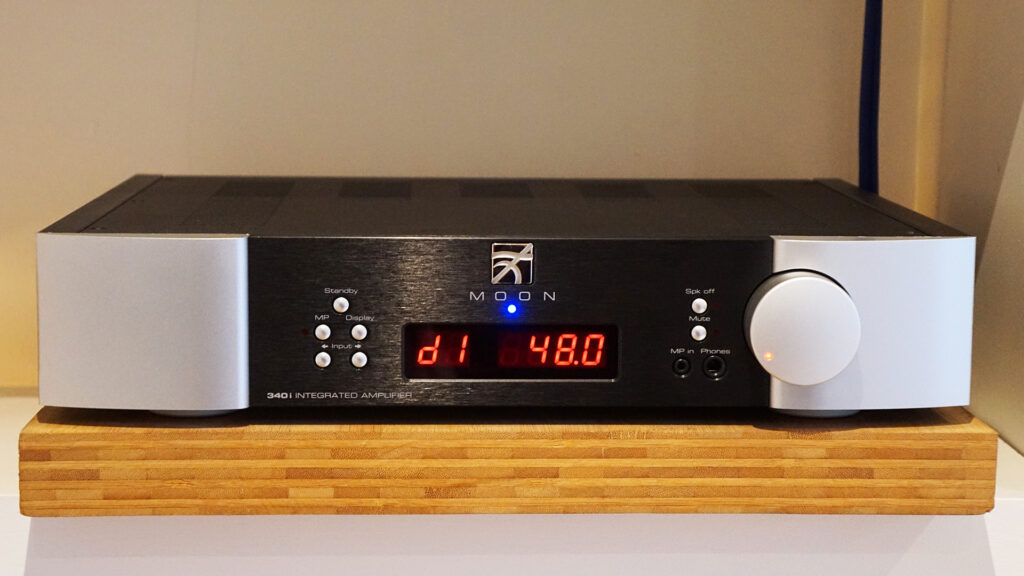
Front panel shows selected input alongside incoming sample rate. A 3.5mm input and 6.35mm headphone jack are handy add-ons
The amp is solidly built with a quality finish. Its front panel controls, which include separate speakers off (for headphone listening) and mute buttons plus an illuminated volume knob are simple to use. The large red LED front panel display may have a the vibe of a retro alarm lock, but from across the room it’s highly legible and that’s what matters. That said it can also be turned off if you prefer. The slender supplied remote is also nicely finished and more responsive that most.
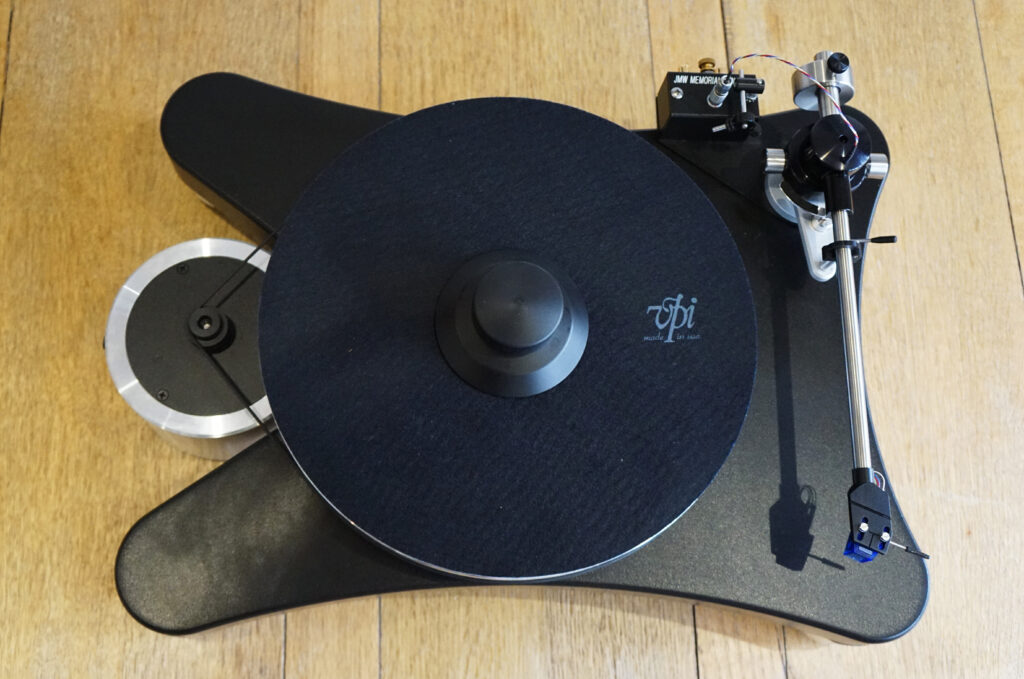
Without a square edge in sight, the Scout 21 stands out from the turntable crowd
Scouting for VPI
Taking the reins from his father Harry, VPI head honcho Mat Weisfeld has been on a mission over the last decade to further establish the brand as a builder of high-quality accessible turntables, that look as stylish as they sound. With a focus on ease of use, it’s no wonder that they’re many a reviewer’s reference vinyl spinner. The Scout 21 brings the Scout moniker back to the fore, with this model replacing the outgoing Prime Scout through upgrades including to its feet and motor.
The main deck is constructed around a 38mm thick vinyl-wrapped sculptured MDF plinth that’s reinforced with a steel plate, bonded to its underside. The plinth supports a 5.3kg machined aluminium platter with an MDF resonance canceling disc bonded within it that has a black vinyl underside to match the plinth. This turns on a precision bearing using a ground 60 Rockwell case hardened shaft, graphite impregnated brass bushing and a PEEK thrust disc with improved machining and tolerance holding capabilities.
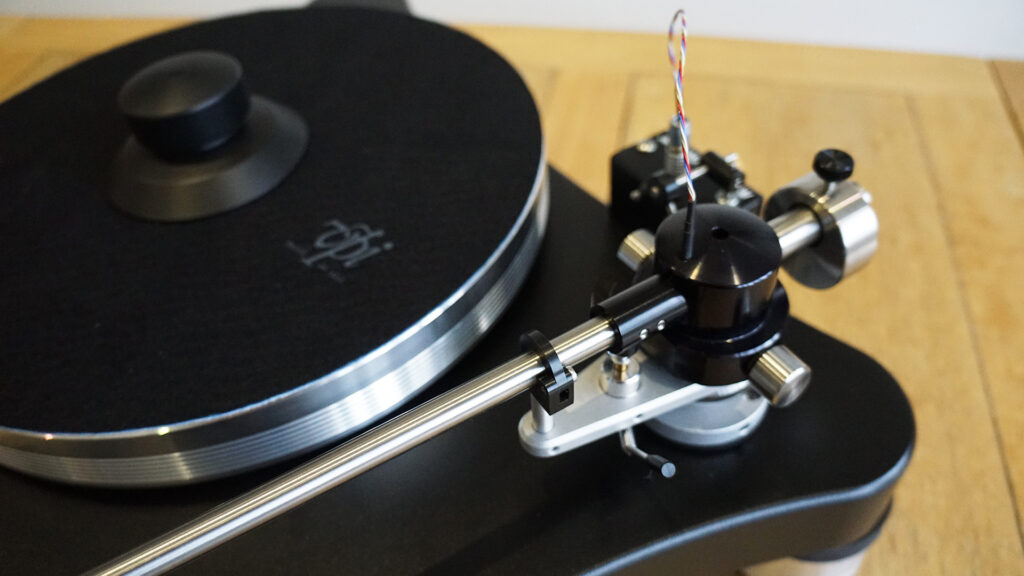
Unipivot tonearm is beautifully finished and a dream to use, with a wealth of adjustments at your fingertips
Modern classic
While VPI has been focussed on developing its gimbal and fatboy tonearms of late, the Scout 21 comes with the latest iteration of VPI’s long established 9” JMW unipivot arm. This uses a finely turned spike in its lower assembly that locates into a female cup in the arm’s upper bearing housing, meaning you can lift the whole arm wand off in seconds, simply by unplugging its Lemo armwire connector, making cartridge swaps a doddle.
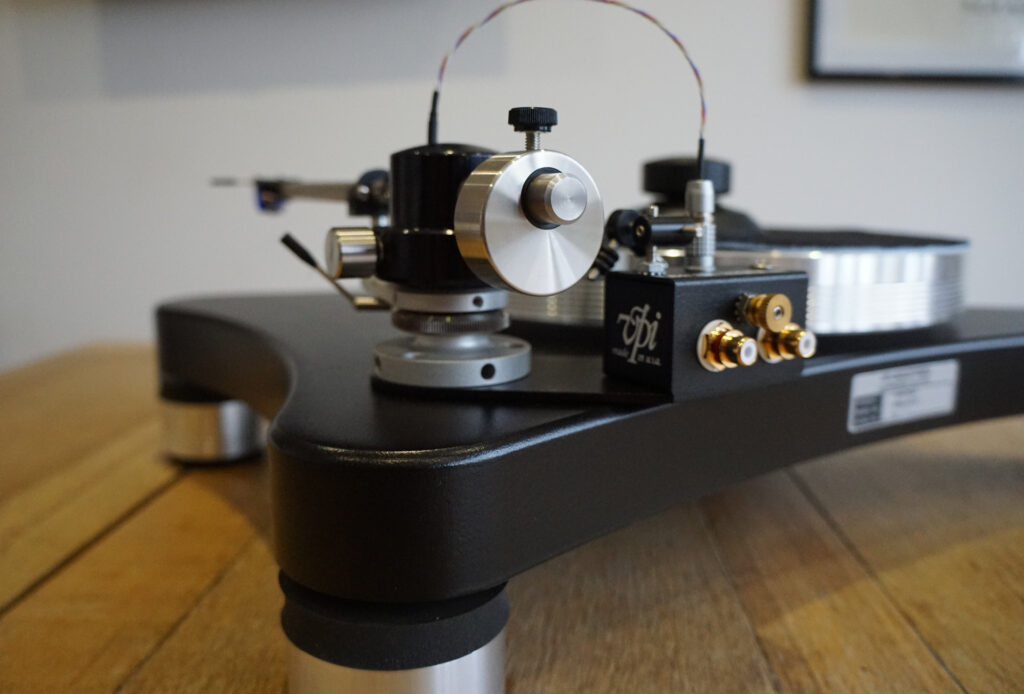
Armwire loop is used to generate anti-skate. Rear phono outputs are top quality and well spaced
The arm offers a range of manual adjustments too, from arm height to azimuth fine tuning via wind out weights on the bearing housing, alongside the usual tracking force and alignment settings. And with a range of sensible tools and simple instructions supplied, the arm’s set-up is exemplary, making it easy to fine tune and get the best out of it. Anti-skate is achieved ‘naturally’ via the tension from the twists in the loop of arm wire between the bearing housing and junction box, but if you want an alternative method, you can also fit an included thread and weight between the arm and cable junction box.
VPI’s trademark rubber platter washer and delrin threaded clamp are included too, to help flatten warps in your treasured vinyl and the periphery belt drive approach makes the deck easy to get running, simply site the motor in the plinth’s cut-out and pop the belt on. Each pulley (for 33 and 45rpm) has three grooves for fine tuning speed settings.
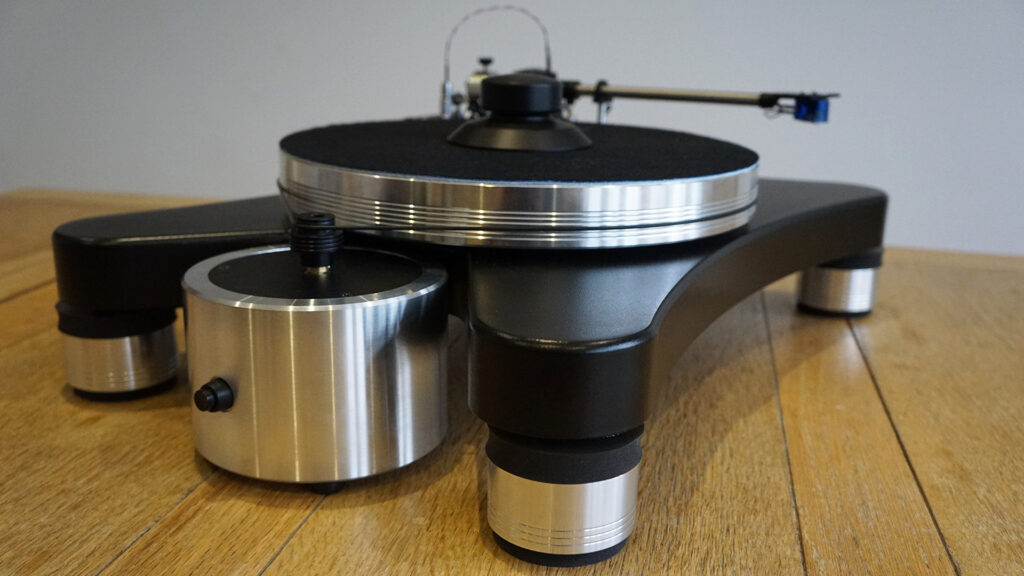
Beefed up motor and HW-40 isolation feet add to the aesthetics while bringing sonic improvements
Of course the icing on the new model’s cake is Harry’s HW-40 designed isolation feet. Not only do these look much better than the outgoing model’s flowerpot men like shoes, they also elevate the deck’s performance thanks to how their foam and rubber internals absorb unwanted vibrations. Current VPI owners can fear not too, as these are available as upgrades to existing decks for £400 a set.
The 300rpm outboard motor has also been updated and resides in a beefed up brushed alloy case with tidier internal wiring, that makes the whole rig look pure class in black and silver, matching the MOON amp perfectly.
To ensure we were hearing the deck at its best, we opted for VPI’s and Nordost’s Weisline cable (£690 for 1m) between the deck and amp.
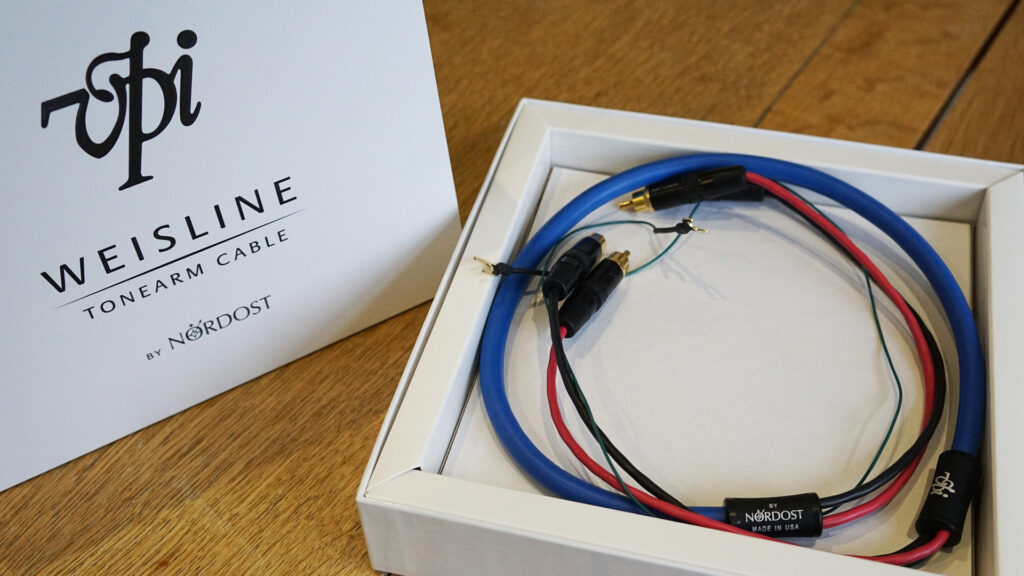
VPI/Nordost Weisline tonearm cable is a no-compromise upgrade that will ensure the deck isn’t being held back
Performance
After running both units in for some weeks with a Benz Micro Ace SH cartridge installed on the VPI and Dynaudio Focus 260 loudspeakers at the amp’s mercy, both units settled into their stride. During the break in period the deck was also regularly speed tested with a Rega Strobe kit and Turntabulator app to ensure the motor and belt were running at their optimum settings, which also revealed how stable and accurate the VPI’s motor is.
The amp’s run-in included serving up Peter Jackson’s Get Back documentary, so it seems only fitting to kick off with an original vinyl pressing of The Beatles’ Let It Be. Hearing this album illustrates what these two separates do so well by presenting the recording with such natural musicality, it’s easy to forget you’re listening to a recording of fifty years’ vintage. On the wrong system Dig A Pony‘s production can sound disjointed and dry, but with the MOON and VPI in command there’s a truer sense of how the track holds together as a cohesive whole. The dynamic swings are delivered with a delicious amount of contrasting slam and sensitivity, to make sure the trailing edges of the softly sung and strummed high notes have just as much presence as the hard hitting riffs and vocals. And Lennon’s voice with all its strengths and weaknesses is laid bare to make him sound so honest, thanks to how well this combo can image whatever is thrown at it.
It’s also clear both components are working in unison, as the deck digs deep into the detail with ease for the amp to work its magic on. To describe the amp as voiced would be to do it a disservice, but what is clear is how MOON’s engineers have tuned this with their ears as well as their test kit.
When the opening strums of Across The Universe flow forth, not only can I hear the plectrum striking string, I can also sense the textures of each, taking me closer to the performance and recording space but without sounding overly analytical.
Having lived with a VPI deck as a reference machine for almost a decade, I’m more than familiar with the brand’s sonic attributes. That effortless bass depth across a wide soundstage which you get with high mass decks is in abundance with the Scout 21, combined with class leading pace and punch you tend to find in more lithe machines. It’s what makes VPI’s turntables so appealing, in how they strike a best of both worlds’ balance. With Little Dragon’s Paris from their Nabuma Rubberband LP these strengths are hammered home with the low notes and midrange sounding expansive, powerful and punchy, that I’d defy anyone to resist foot tapping from one hundred paces away.
Hearing this track also dispels any assumptions that unipivot arms favour detail and openness at the expense of low end control and wallop, with the VPI package serving up fast sounding bass that’s deep and gripped with real authority. What’s also present however is a lush, clear and open top end that’s reminiscent of the best of the suspended turntable breed. Whether this is due to how well the Scout’s arm, isolating feet and other upgrades are making their presence known I can’t say, but overall it makes for a compelling sonic offer.
With Aldous Harding’s Party LP gracing the deck’s platter, her vocals on album opener Blend are all encompassing, while also sounding translucent enough to fill my listening room with an omnipresence that doesn’t dominate, so that the accompanying music can be equally appreciated.
Testing the MOON’s digital internals with a 24-bit/192kHz file of Neil Young’s They Might Be Lost via Qobuz demonstrate the amp’s ability to balance detail with melody in the digital domain too. The mellow piano and guitar notes resonate with effortless natural reverberation, and with a warmth that sounds pure analogue despite the track’s digital DNA.
And with a 24/96 file of Noel Gallagher’s On Our Way Now the backing vocals and looping guitars don’t just emanate from the edges of the soundstage, they rise and swoop from deep within it, giving the track its atmospheric weight and scale. This highlights how the D3 module is not just a handy add-on for practical reasons, it’s also a high quality DAC in its own right too.
In Summary
Reviewing a system as a cohesive whole can present more challenges sonically than it does solutions, not so with the MOON and VPI combo, which is the hifi equivalent of when Ant asked Dec how he was fixed for a rumble. With the Scout 21, VPI really has addressed any shortcomings to deliver what is one of the best and most accessible mid to high end turntables on the market today. Add to this the flexibility, usability and sheer musicality of the MOON 340i X package and you have a system that punches well above its weight. Just add loudspeakers good enough to do this system justice and you wont be left wanting.



